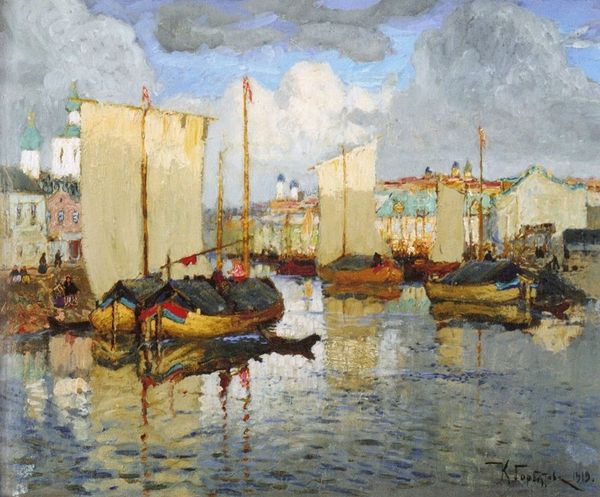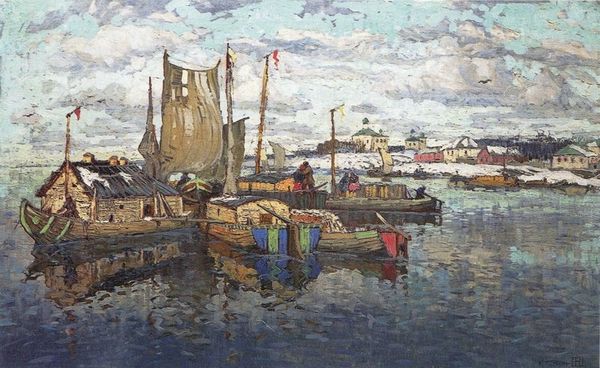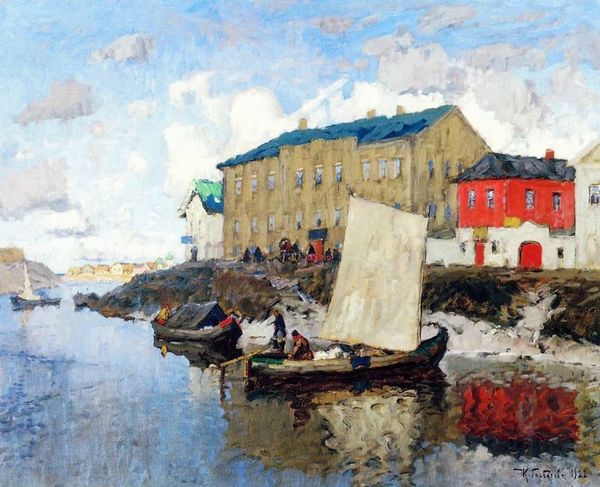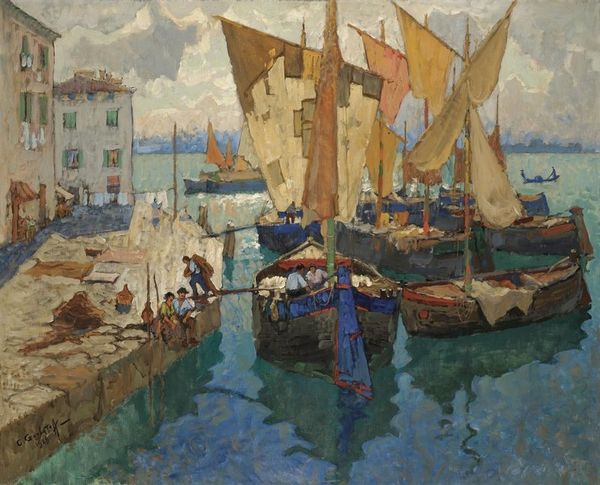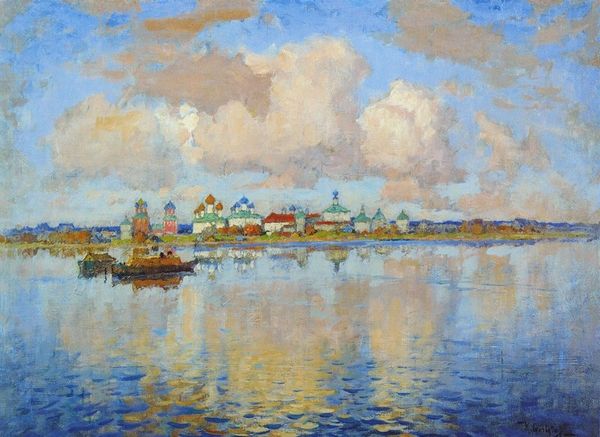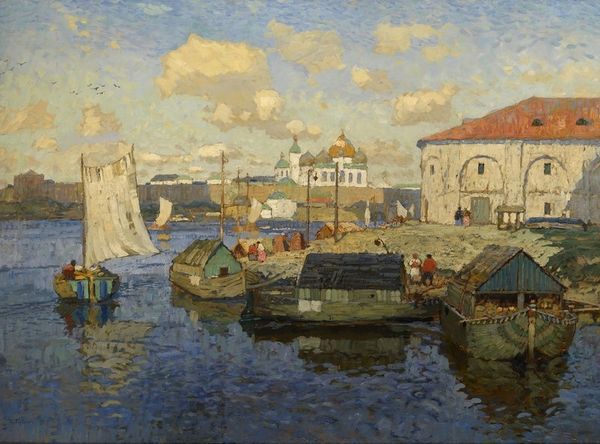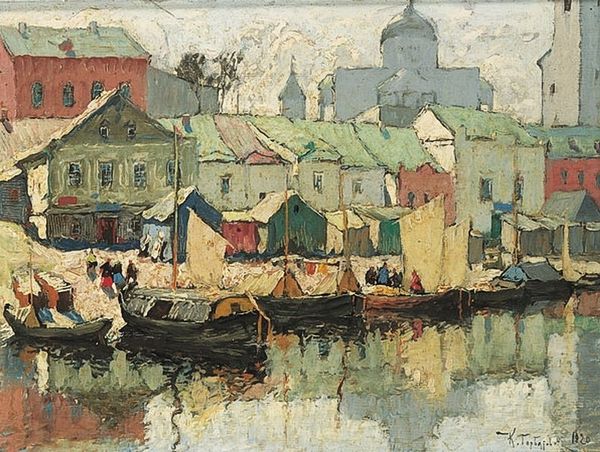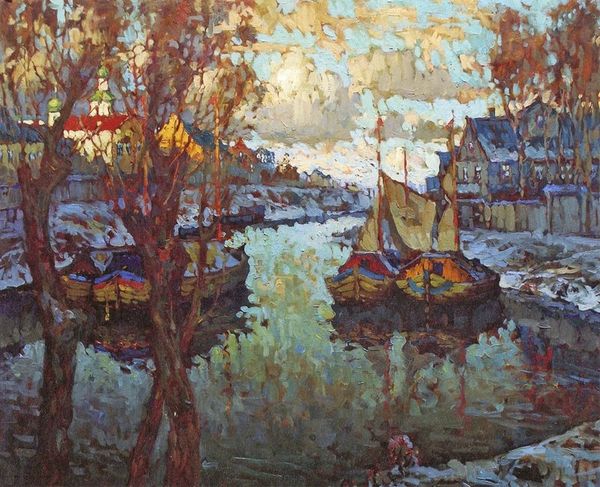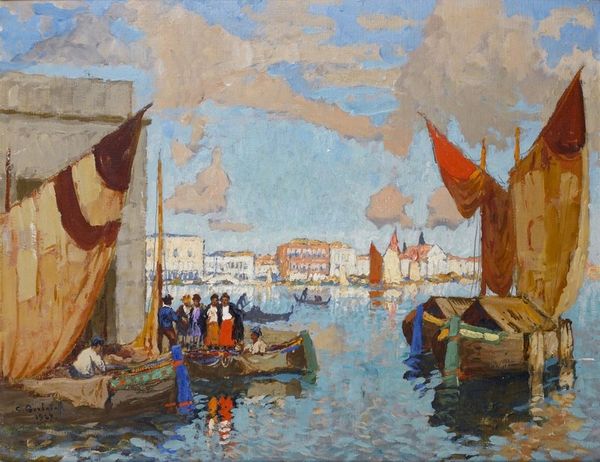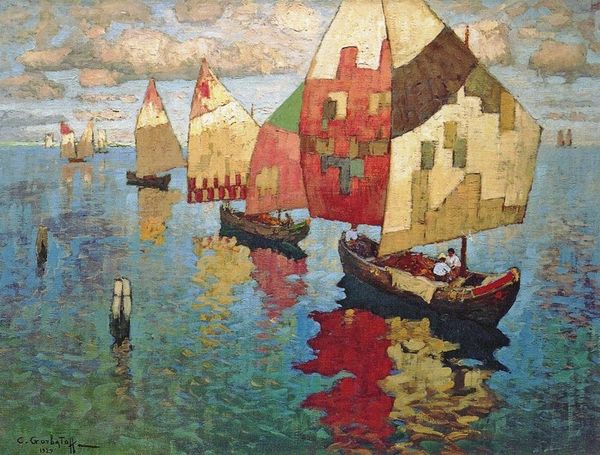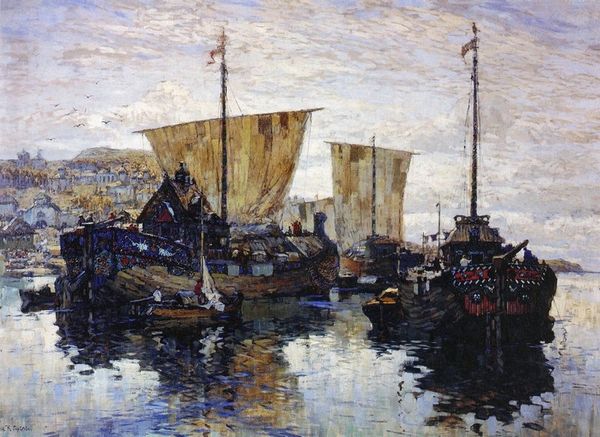
Copyright: Public domain
Editor: Here we have Konstantin Gorbatov's "Pskov," painted in 1919. The oil paint gives the scene a beautiful, shimmering quality. I'm really struck by how peaceful it feels, almost dreamlike. What catches your eye when you look at this piece? Curator: Dreamlike is the word! I see reflections, really – both literal, in the water’s surface, and more metaphorical. The vibrant brushstrokes suggest a memory more than a precise depiction of Pskov. It feels personal. Those church domes… do they speak to you? They hint at a sense of history, faith… Editor: They do, almost like little beacons. I guess I hadn't really thought about the historical context, focusing more on the aesthetic qualities. So, do you think he was trying to capture more than just a pretty cityscape? Curator: Oh, absolutely. Remember, 1919 – revolution, upheaval! Pskov, a city steeped in Russian history, could represent a longing for a perhaps idealized past. Maybe painting this scene was a way for Gorbatov to connect with his roots amidst so much change and uncertainty. Do you feel any tension between that ideal and reality in the painting itself? Editor: Hmm, the reflections, like a distorted memory? Or is it simply the charm of the impressionist style? Thanks, I hadn't thought about it in relation to what was happening at the time it was painted. It does change how I look at it! Curator: Art always reflects the world that birthed it. Next time you approach any artwork, try considering both outward expressions and internal experiences, they help shape how we look at the piece and the world that shaped the piece. It makes for an enriching reflection.
Comments
No comments
Be the first to comment and join the conversation on the ultimate creative platform.
